-
 Bitcoin
Bitcoin $108,165.4587
0.78% -
 Ethereum
Ethereum $2,456.3517
1.15% -
 Tether USDt
Tether USDt $1.0003
0.00% -
 XRP
XRP $2.1934
0.05% -
 BNB
BNB $650.0935
0.52% -
 Solana
Solana $151.3905
2.69% -
 USDC
USDC $0.9998
0.00% -
 TRON
TRON $0.2751
-0.32% -
 Dogecoin
Dogecoin $0.1640
0.87% -
 Cardano
Cardano $0.5631
0.57% -
 Hyperliquid
Hyperliquid $38.7115
4.69% -
 Bitcoin Cash
Bitcoin Cash $493.1868
-0.39% -
 Sui
Sui $2.8217
3.61% -
 Chainlink
Chainlink $13.3994
2.08% -
 UNUS SED LEO
UNUS SED LEO $9.1632
0.94% -
 Avalanche
Avalanche $18.0318
1.97% -
 Stellar
Stellar $0.2388
0.35% -
 Toncoin
Toncoin $2.8763
1.41% -
 Shiba Inu
Shiba Inu $0.0...01160
1.59% -
 Litecoin
Litecoin $86.6393
1.29% -
 Hedera
Hedera $0.1485
0.16% -
 Monero
Monero $315.7948
1.56% -
 Polkadot
Polkadot $3.4240
1.88% -
 Bitget Token
Bitget Token $4.6314
-0.44% -
 Dai
Dai $0.9998
-0.01% -
 Ethena USDe
Ethena USDe $1.0002
-0.01% -
 Uniswap
Uniswap $7.2110
2.59% -
 Aave
Aave $270.6087
6.07% -
 Pi
Pi $0.5350
0.52% -
 Pepe
Pepe $0.0...09545
1.26%
How to trade leveraged tokens on MEXC
Trading leveraged tokens on MEXC offers amplified exposure to crypto price movements, but requires understanding their mechanics and effective risk management to navigate the market successfully.
Apr 03, 2025 at 12:15 am
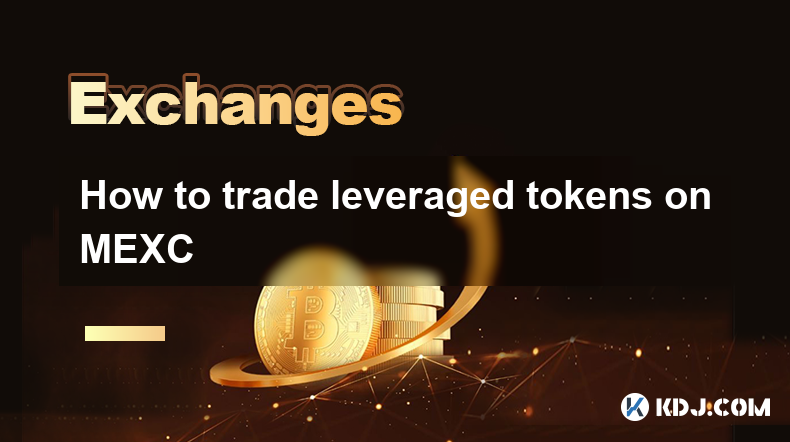
Trading leveraged tokens on MEXC can be an exciting yet complex endeavor for cryptocurrency enthusiasts. Leveraged tokens are financial instruments that allow traders to gain exposure to the price movements of an underlying asset with added leverage, without the need for managing margin or worrying about liquidation. MEXC, a popular cryptocurrency exchange, offers a variety of leveraged tokens that cater to different trading strategies and risk appetites. Understanding how to effectively trade these tokens on MEXC requires a solid grasp of their mechanics, the platform's features, and the associated risks.
In this article, we will delve into the intricacies of trading leveraged tokens on MEXC. We will cover how to get started, the types of leveraged tokens available, strategies for trading, and essential risk management techniques. Whether you are a novice trader looking to dip your toes into the world of leveraged trading or an experienced trader seeking to optimize your strategies, this guide will provide you with the knowledge and tools needed to navigate the leveraged token market on MEXC.
Getting Started with Leveraged Tokens on MEXC
To begin trading leveraged tokens on MEXC, you first need to create an account on the platform. The registration process is straightforward and requires basic personal information. Once registered, you will need to complete the Know Your Customer (KYC) verification process to ensure compliance with regulatory standards. After your account is verified, you can deposit funds into your MEXC wallet using various methods, including bank transfers, credit/debit cards, and cryptocurrencies.
- Navigate to the MEXC website and click on the "Sign Up" button.
- Fill in your email address, create a password, and complete the CAPTCHA verification.
- Verify your email address by clicking on the confirmation link sent to your inbox.
- Complete the KYC verification by submitting the required documents, such as a government-issued ID and proof of address.
- Once your account is verified, go to the "Deposit" section and select your preferred method to fund your account.
After funding your account, you can start exploring the leveraged tokens available on MEXC. The platform offers a wide range of tokens, each designed to provide different levels of leverage and exposure to various cryptocurrencies. It's important to familiarize yourself with the specific characteristics of each token before making any trading decisions.
Understanding Leveraged Tokens on MEXC
Leveraged tokens on MEXC are designed to provide traders with amplified exposure to the price movements of an underlying asset. These tokens are rebalanced daily to maintain a constant leverage ratio, which can be either bullish (long) or bearish (short). For example, a 3x long Bitcoin token aims to deliver three times the daily performance of Bitcoin, while a 3x short Bitcoin token aims to deliver three times the inverse daily performance.
The key advantage of trading leveraged tokens is that they eliminate the need for margin trading and the associated risks of liquidation. However, it's crucial to understand that the daily rebalancing mechanism can lead to compounding effects over time, which may result in performance that deviates from the expected leverage over longer periods. Therefore, traders should be aware of the potential for significant gains or losses when holding leveraged tokens for extended periods.
- 3x Long Tokens: These tokens aim to deliver three times the daily performance of the underlying asset.
- 3x Short Tokens: These tokens aim to deliver three times the inverse daily performance of the underlying asset.
- Daily Rebalancing: The tokens are rebalanced daily to maintain a constant leverage ratio, which can lead to compounding effects over time.
Types of Leveraged Tokens Available on MEXC
MEXC offers a diverse selection of leveraged tokens, covering a wide range of cryptocurrencies. Some of the most popular tokens include those based on Bitcoin (BTC), Ethereum (ETH), and other major altcoins. Each token is designed to provide different levels of leverage, allowing traders to choose the one that best fits their trading strategy and risk tolerance.
- BTC3L: A 3x long Bitcoin token that aims to deliver three times the daily performance of Bitcoin.
- BTC3S: A 3x short Bitcoin token that aims to deliver three times the inverse daily performance of Bitcoin.
- ETH3L: A 3x long Ethereum token that aims to deliver three times the daily performance of Ethereum.
- ETH3S: A 3x short Ethereum token that aims to deliver three times the inverse daily performance of Ethereum.
In addition to these major tokens, MEXC also offers leveraged tokens for other cryptocurrencies, such as Litecoin (LTC), Ripple (XRP), and Cardano (ADA). Each token comes with its own set of characteristics and risks, so it's essential to conduct thorough research before trading.
Strategies for Trading Leveraged Tokens on MEXC
Trading leveraged tokens on MEXC requires a well-thought-out strategy to maximize potential gains while minimizing risks. Here are some common strategies that traders can consider:
- Day Trading: Given the daily rebalancing mechanism of leveraged tokens, day trading can be an effective strategy. Traders can take advantage of short-term price movements and avoid the compounding effects that can occur over longer periods.
- Trend Following: Traders can use technical analysis to identify trends in the underlying asset and trade leveraged tokens accordingly. For example, if Bitcoin is in an uptrend, a trader might buy BTC3L to capitalize on the upward movement.
- Hedging: Leveraged tokens can be used to hedge existing positions in the spot market. For instance, if a trader holds a long position in Bitcoin, they might buy BTC3S to hedge against potential downside risk.
- Arbitrage: Some traders engage in arbitrage by exploiting price discrepancies between leveraged tokens and their underlying assets. This strategy requires quick execution and a deep understanding of market dynamics.
Each of these strategies comes with its own set of risks and rewards, so it's important to choose the one that aligns with your trading goals and risk tolerance.
Risk Management Techniques for Trading Leveraged Tokens
Trading leveraged tokens on MEXC can be highly rewarding, but it also comes with significant risks. Effective risk management is crucial to protect your capital and ensure long-term success. Here are some key risk management techniques to consider:
- Position Sizing: Determine the appropriate size of your positions based on your overall portfolio and risk tolerance. Avoid over-leveraging, as it can lead to substantial losses.
- Stop-Loss Orders: Use stop-loss orders to limit potential losses. Set your stop-loss levels based on your risk tolerance and the volatility of the underlying asset.
- Diversification: Diversify your portfolio by trading multiple leveraged tokens across different cryptocurrencies. This can help spread risk and reduce the impact of any single token's performance on your overall portfolio.
- Regular Monitoring: Keep a close eye on your positions and the market conditions. Leveraged tokens can be highly volatile, so it's important to stay informed and be ready to adjust your strategy as needed.
- Understanding Compounding Effects: Be aware of the compounding effects that can occur due to daily rebalancing. These effects can lead to performance that deviates from the expected leverage over longer periods, so consider the time horizon of your trades.
By implementing these risk management techniques, you can better navigate the challenges of trading leveraged tokens on MEXC and increase your chances of success.
Using MEXC's Platform Features for Leveraged Token Trading
MEXC offers a range of platform features that can enhance your trading experience and help you make more informed decisions when trading leveraged tokens. Here are some key features to consider:
- Trading Interface: MEXC's trading interface is user-friendly and provides real-time data on leveraged token prices, trading volumes, and order books. You can customize the interface to suit your trading preferences and access advanced charting tools for technical analysis.
- Order Types: MEXC supports various order types, including market orders, limit orders, and stop-loss orders. These order types allow you to execute trades with precision and manage your risk effectively.
- Leveraged Token Dashboard: The platform provides a dedicated dashboard for leveraged tokens, where you can view key metrics such as the token's performance, leverage ratio, and rebalancing history. This information can help you make more informed trading decisions.
- Mobile App: MEXC's mobile app allows you to trade leveraged tokens on the go. The app offers the same features as the web platform, ensuring you can stay connected to the market at all times.
- Customer Support: MEXC provides 24/7 customer support to assist you with any questions or issues you may encounter while trading leveraged tokens. You can reach out to the support team via live chat, email, or phone.
By leveraging these platform features, you can enhance your trading experience and make more informed decisions when trading leveraged tokens on MEXC.
Common Questions and Answers
Q: What are leveraged tokens on MEXC?
A: Leveraged tokens on MEXC are financial instruments that provide traders with amplified exposure to the price movements of an underlying asset. These tokens are rebalanced daily to maintain a constant leverage ratio, which can be either bullish (long) or bearish (short).
Q: How do I start trading leveraged tokens on MEXC?
A: To start trading leveraged tokens on MEXC, you need to create an account, complete the KYC verification process, and deposit funds into your MEXC wallet. Once your account is set up, you can navigate to the leveraged token section and begin trading.
Q: What are the risks associated with trading leveraged tokens on MEXC?
A: Trading leveraged tokens comes with significant risks, including the potential for substantial losses due to the amplified exposure to price movements. The daily rebalancing mechanism can also lead to compounding effects over time, which may result in performance that deviates from the expected leverage over longer periods.
Q: What strategies can I use to trade leveraged tokens on MEXC?
A: Common strategies for trading leveraged tokens on MEXC include day trading, trend following, hedging, and arbitrage. Each strategy has its own set of risks and rewards, so it's important to choose the one that aligns with your trading goals and risk tolerance.
Q: How can I manage risk when trading leveraged tokens on MEXC?
A: Effective risk management techniques for trading leveraged tokens include position sizing, using stop-loss orders, diversifying your portfolio, regular monitoring, and understanding the compounding effects of daily rebalancing. Implementing these techniques can help protect your capital and increase your chances of success.
Disclaimer:info@kdj.com
The information provided is not trading advice. kdj.com does not assume any responsibility for any investments made based on the information provided in this article. Cryptocurrencies are highly volatile and it is highly recommended that you invest with caution after thorough research!
If you believe that the content used on this website infringes your copyright, please contact us immediately (info@kdj.com) and we will delete it promptly.
- Bitcoin: A Lifeline Against Authoritarian Regimes and a Strategic Asset?
- 2025-06-29 22:30:12
- Elementary, My Dear Collector: Sherlock Holmes 50p Coins on eBay!
- 2025-06-29 22:30:12
- New Coin Disappearing Fast: The Price Impact of Angry Pepe Fork
- 2025-06-29 22:35:12
- Tron vs. Dogecoin: A Cryptocurrency Showdown in 2025
- 2025-06-29 22:50:12
- Ethereum, DeFi, and Cryptocurrency: Navigating the Evolving Landscape
- 2025-06-29 23:07:14
- Bitcoin Acquisition Strategy: From Saylor's Playbook to London's Crypto Craze
- 2025-06-29 23:30:12
Related knowledge
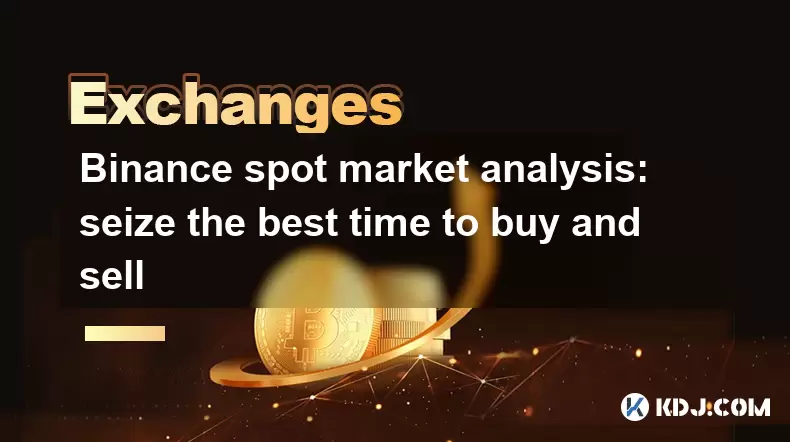
Binance spot market analysis: seize the best time to buy and sell
Jun 19,2025 at 04:56pm
Understanding the Binance Spot MarketThe Binance spot market is one of the most popular platforms for cryptocurrency trading globally. It allows users to trade digital assets at current market prices, making it essential for traders aiming to buy low and sell high. Unlike futures or margin trading, spot trading involves direct ownership of the asset aft...
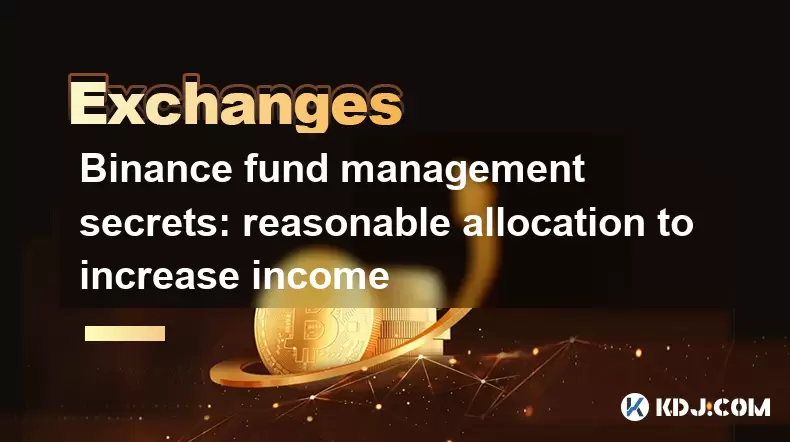
Binance fund management secrets: reasonable allocation to increase income
Jun 22,2025 at 02:29pm
Understanding Binance Fund ManagementBinance fund management involves strategic allocation of your cryptocurrency assets to optimize returns while managing risk. The key to successful fund management lies in understanding how different investment options on the Binance platform can be utilized to create a diversified portfolio. This includes spot tradin...
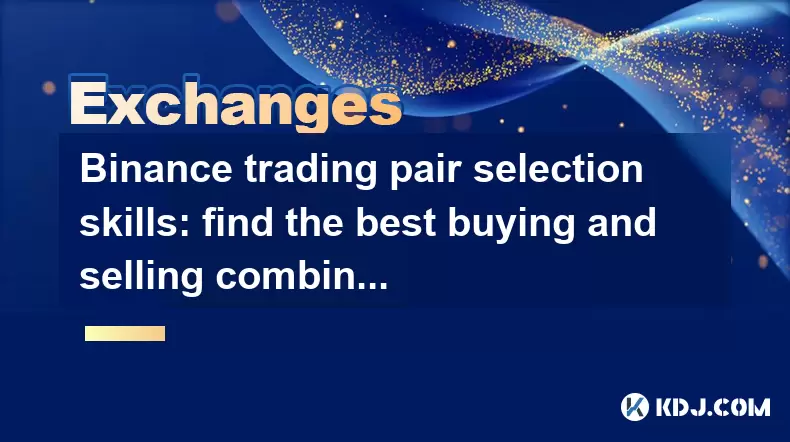
Binance trading pair selection skills: find the best buying and selling combination
Jun 23,2025 at 02:49am
Understanding the Basics of Trading Pairs on BinanceBefore diving into trading pair selection skills, it's essential to understand what a trading pair is. On Binance, a trading pair refers to two cryptocurrencies that can be traded against each other. For example, BTC/USDT means Bitcoin is being traded against Tether. Each trading pair has its own liqui...

Binance new coin mining strategy: participate in Launchpool to earn income
Jun 23,2025 at 11:56am
What is Binance Launchpool and how does it work?Binance Launchpool is a feature introduced by the world’s largest cryptocurrency exchange, Binance, to allow users to earn new tokens through staking. This platform enables users to stake their existing cryptocurrencies (such as BNB, BUSD, or other supported assets) in exchange for newly launched tokens. T...
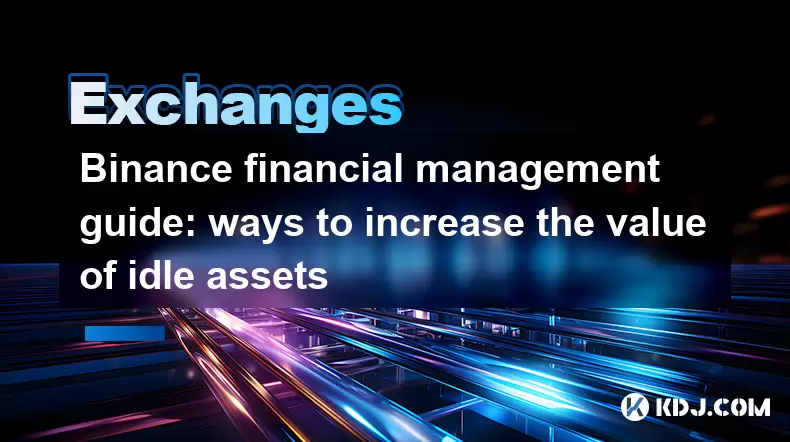
Binance financial management guide: ways to increase the value of idle assets
Jun 19,2025 at 11:22pm
Understanding Idle Assets in the Cryptocurrency SpaceIn the fast-paced world of cryptocurrency, idle assets refer to digital currencies that are not actively being used for trading, staking, or yield farming. Holding these funds in a wallet without utilizing them means missing out on potential growth opportunities. Binance, as one of the leading platfor...
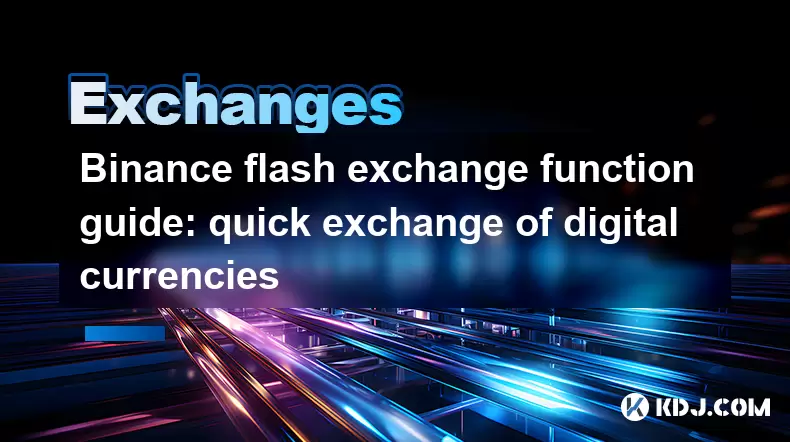
Binance flash exchange function guide: quick exchange of digital currencies
Jun 23,2025 at 12:29pm
What is the Binance Flash Exchange Function?The Binance Flash Exchange function is a powerful tool designed to allow users to instantly swap between supported cryptocurrencies without the need for placing traditional buy/sell orders. This feature simplifies the trading process by offering a direct exchange mechanism, eliminating the requirement to conve...

Binance spot market analysis: seize the best time to buy and sell
Jun 19,2025 at 04:56pm
Understanding the Binance Spot MarketThe Binance spot market is one of the most popular platforms for cryptocurrency trading globally. It allows users to trade digital assets at current market prices, making it essential for traders aiming to buy low and sell high. Unlike futures or margin trading, spot trading involves direct ownership of the asset aft...

Binance fund management secrets: reasonable allocation to increase income
Jun 22,2025 at 02:29pm
Understanding Binance Fund ManagementBinance fund management involves strategic allocation of your cryptocurrency assets to optimize returns while managing risk. The key to successful fund management lies in understanding how different investment options on the Binance platform can be utilized to create a diversified portfolio. This includes spot tradin...

Binance trading pair selection skills: find the best buying and selling combination
Jun 23,2025 at 02:49am
Understanding the Basics of Trading Pairs on BinanceBefore diving into trading pair selection skills, it's essential to understand what a trading pair is. On Binance, a trading pair refers to two cryptocurrencies that can be traded against each other. For example, BTC/USDT means Bitcoin is being traded against Tether. Each trading pair has its own liqui...

Binance new coin mining strategy: participate in Launchpool to earn income
Jun 23,2025 at 11:56am
What is Binance Launchpool and how does it work?Binance Launchpool is a feature introduced by the world’s largest cryptocurrency exchange, Binance, to allow users to earn new tokens through staking. This platform enables users to stake their existing cryptocurrencies (such as BNB, BUSD, or other supported assets) in exchange for newly launched tokens. T...

Binance financial management guide: ways to increase the value of idle assets
Jun 19,2025 at 11:22pm
Understanding Idle Assets in the Cryptocurrency SpaceIn the fast-paced world of cryptocurrency, idle assets refer to digital currencies that are not actively being used for trading, staking, or yield farming. Holding these funds in a wallet without utilizing them means missing out on potential growth opportunities. Binance, as one of the leading platfor...

Binance flash exchange function guide: quick exchange of digital currencies
Jun 23,2025 at 12:29pm
What is the Binance Flash Exchange Function?The Binance Flash Exchange function is a powerful tool designed to allow users to instantly swap between supported cryptocurrencies without the need for placing traditional buy/sell orders. This feature simplifies the trading process by offering a direct exchange mechanism, eliminating the requirement to conve...
See all articles

























































































